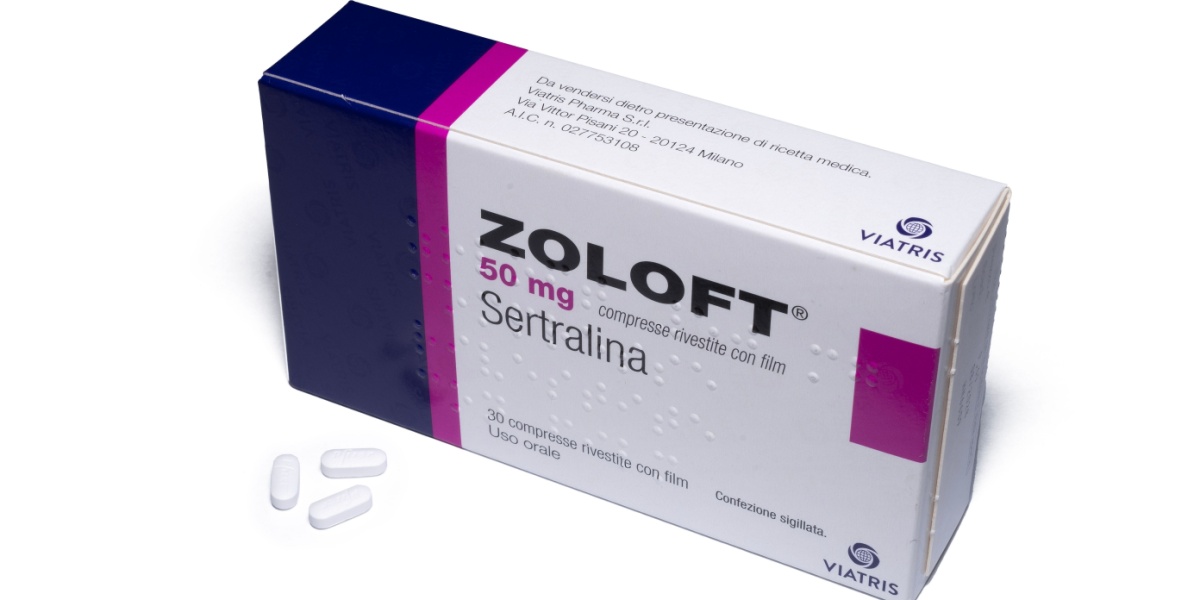Zoloft (sertraline) is a selective serotonin reuptake inhibitor (SSRI) widely prescribed for depression, anxiety, obsessive-compulsive disorder (OCD), post-traumatic stress disorder (PTSD), and panic disorders.[1] Knowing how long Zoloft stays in the body is helpful for setting dosing intervals, managing medication tapering, and interpreting specialized drug test results.
Though it is not part of standard drug panels (e.g., the typical 5- or 10-panel tests for illicit substances), Zoloft can be detected with targeted testing. The detection window depends on factors such as metabolism, age, overall health, and liver function.[2]
Below is an overview of typical detection times:[2][3][4]
| Drug Test Type | Zoloft Detection Time |
|---|---|
| Urine | 3–7 days after use |
| Blood | 1-2 days after use |
| Saliva | 1–3 days after use |
| Hair | Up to 90 days after use |
This guide will summarize the typical half-life of Zoloft, factors affecting its clearance, potential withdrawal risks, and how to discontinue Zoloft safely.
- Zoloft is typically detectable for 1–7 days in blood, urine, or saliva tests, yet it may be found for up to 90 days in hair follicle tests.
- Metabolism, age, liver and kidney health, body composition, and genetic differences all affect how quickly Zoloft is cleared from the body.
- To minimize withdrawal risks, it is recommended that Zoloft be discontinued gradually under medical supervision.

Zoloft half-life: How long does Zoloft stay in your system?
A drug’s half-life is the time required to eliminate 50% of the substance from the bloodstream. Zoloft’s half-life is 24 to 26 hours, meaning about half of the drug is cleared in one day.[5] Total elimination typically occurs over five to six half-lives, placing complete clearance at roughly 5–6 days for most people.
However, Zoloft’s primary metabolite—desmethylsertraline—has a longer half-life of up to 66 hours.[6] Consequently, small residual amounts can stay in the body for about two weeks. Genetic variability in the liver enzymes CYP2C19 and CYP3A4 responsible for Zoloft metabolism can further prolong or shorten these estimates.[7]
Why knowing the half-life of Zoloft is important:
- Dosage schedules depend on Zoloft’s 24-hour half-life to maintain stable medication levels.
- Residual metabolites (desmethylsertraline) can remain active for up to a week, explaining lingering effects or withdrawal symptoms.
Zoloft effects: How long does Zoloft last?
Zoloft blood levels peak 4–6 hours after ingestion and decline in about a day. Its therapeutic effects for depression or anxiety commonly take 4–6 weeks to reach full efficacy.[8] This is due to gradual adaptations in brain chemistry rather than instantaneous relief or action on receptors in the brain.
Zoloft detection times
Routine drug screenings do not typically test for Zoloft due to the following reasons: [2][4]
- Not a controlled substance – Unlike opioids or benzodiazepines, Zoloft has no abuse potential and is not regulated as a controlled drug.
- Potential for false positives – Some drug tests may incorrectly identify Zoloft as benzodiazepines or LSD due to cross-reactivity in enzyme-linked immunoassays. Confirmatory testing can help rule out false positives.
Although Zoloft is not commonly included in standard drug screenings, targeted drug testing may be required in specific situations:[2][4]
- Forensic and postmortem analysis: In overdose or unexplained deaths, toxicology reports may assess Zoloft levels to determine whether it contributed to the cause of death.
- Therapeutic drug monitoring (TDM): In cases of suspected medication non-compliance, adverse effects, or poor therapeutic response, doctors may measure blood levels to ensure the patient is receiving an appropriate dose.
- Suspected overdose or poisoning: If a patient presents with symptoms of serotonin toxicity or a medication overdose, blood or urine tests can help confirm excessive Zoloft levels.
Zoloft detection is mainly relevant in specialized cases instead of routine drug screenings due to its non-controlled status and specific testing requirements.
Zoloft in urine testing
Zoloft is detectable in urine for about 3–7 days. Zoloft is primarily excreted through the kidneys, with Zoloft and its primary metabolite, desmethylsertraline, being eliminated via renal pathways.[9]
Zoloft in blood testing
Zoloft is detectable in blood for 24–48 hours, making blood tests most helpful in indicating recent use or confirming compliance.[9]
Saliva testing for Zoloft
Zoloft is detectable in saliva for about 1–3 days; however, saliva tests are rarely used specifically for SSRIs.[9]
Zoloft hair testing
Hair follicle testing can reveal exposure for up to 90 days, although pinpointing the exact dates of when it was taken is difficult.[9]
Factors influencing how long Zoloft stays in the body
The following are clinically the most important factors influencing how long Zoloft remains in the system:[1][7]
- Liver/kidney function: Reduced organ function can slow the breakdown and excretion of Zoloft.
- Age: Older adults often have slower metabolic rates, prolonging the presence of Zoloft in the body.
- Genetics: Variants in cytochrome P450 enzymes (like CYP2C19 and CYP3A4) can fasten or delay the clearance of Zoloft.
- Dosage & duration: Higher doses or long-term use can lead to increased accumulation of the drug.
- Body composition: Although SSRIs are less lipophilic than some other drugs, people with higher body fat might store trace amounts of Zoloft and its metabolites longer.
Zoloft withdrawal
Abrupt cessation can lead to SSRI discontinuation syndrome—a temporary cluster of symptoms due to sudden shifts of serotonin levels in the brain. Common complaints include:[1][10]
- Dizziness
- Headaches
- Flu-like symptoms
- “Brain zaps” (sudden feelings of electrical shock sensations)
- Irritability
- Anxiety
- Mood fluctuations
- Nausea
- Stomach cramps
How to stop taking Zoloft safely
Because of potential withdrawal effects, medical professionals advise tapering Zoloft slowly rather than stopping suddenly. Depending on your dosage and how long you have been taking the medication, doctors may suggest gradually decreasing the dose over several weeks or more.[11]
Tapering allows the brain to adapt and helps minimize discontinuation symptoms. In some cases, providers may recommend switching to a longer-acting SSRI or another medication during the taper if withdrawing from Zoloft is particularly difficult for the individual.[11]

-person-thumbnail.jpg?v=1758880627)

-guide-detail.jpg?v=1722501565)